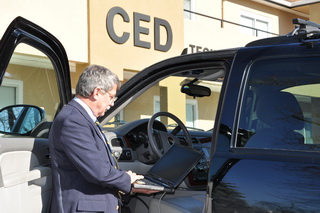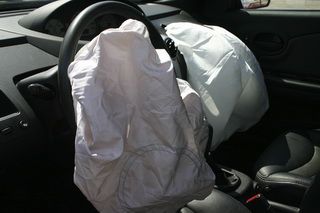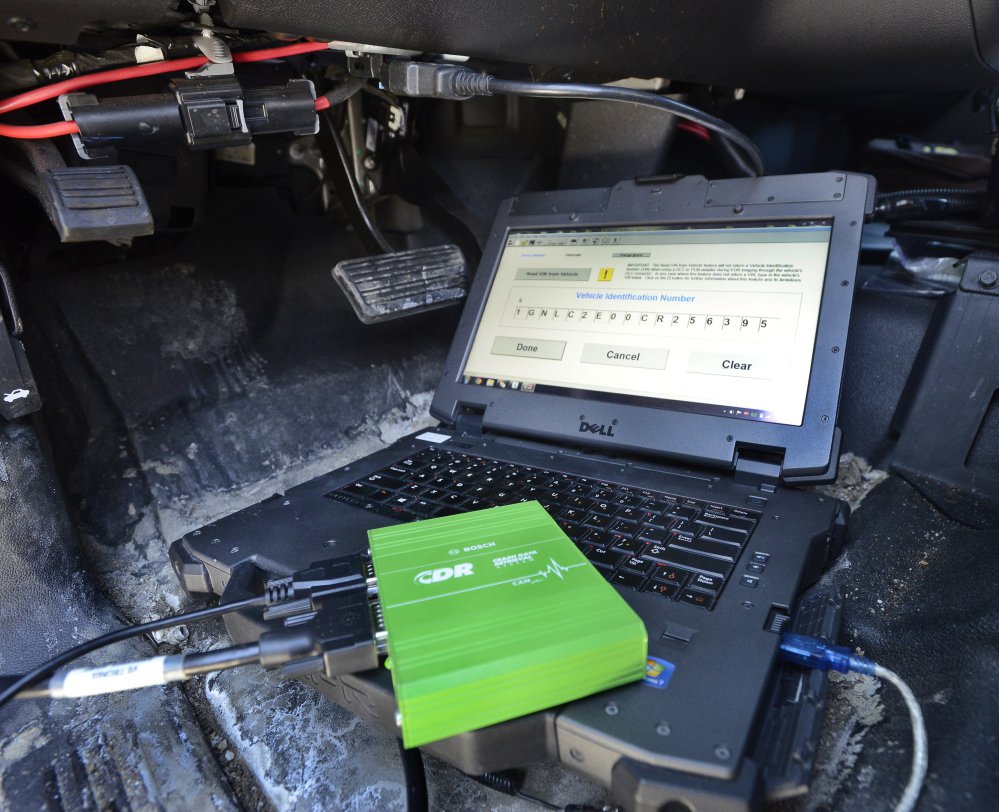 When air bag technology was first being developed, determining when an air bag should be activated was just as important as the physical air bag itself. After all, deploying the airbag when a driver barely taps a curb or runs over a pothole would create more problems than it would solve. So, there had to be a way to determine when a driver was in enough danger so that an air bag deployment would be justified. Sensors were placed within the vehicle and thresholds were established within the software that could quickly determine whether or not an event was serious enough to merit a deployment. As a side effect of this automated effort, the air bag system was routinely capturing data and temporarily keeping it in the air bag control module.
When air bag technology was first being developed, determining when an air bag should be activated was just as important as the physical air bag itself. After all, deploying the airbag when a driver barely taps a curb or runs over a pothole would create more problems than it would solve. So, there had to be a way to determine when a driver was in enough danger so that an air bag deployment would be justified. Sensors were placed within the vehicle and thresholds were established within the software that could quickly determine whether or not an event was serious enough to merit a deployment. As a side effect of this automated effort, the air bag system was routinely capturing data and temporarily keeping it in the air bag control module.
Information recorded in the airbag control module (including impact severity and the performance of the restraint system) was helpful to the automotive industry as they sought to improve the safety features of their products.
Eventually, the public became aware that many of the vehicles they had been driving for years were monitoring how the vehicle was being operated. Vehicle speed, recorded a few seconds before a collision, was the information that got a lot of attention. Groups and individuals soon realized the importance of having an independent electronic witness riding along in the vehicle, ready and able to provide detailed pre-crash data. Today, Event Data Recorders (EDRs) have become an integral part of many collision investigations and product liability litigation actions, proving their value many times over.
However, because this technology evolved in a legislative vacuum, there is no standardization and, as a result, many shortcomings. Perhaps the biggest barrier is getting access to the stored data in the first place. Some manufacturers make this a relatively simple process that can be conducted with commercially available hardware and software. However, some manufacturers retain proprietary control. Accessing and interpreting the data from these systems remains difficult, impractical and frustrating. The inconsistency between manufacturers regarding what constitutes a recordable event and what specific data is recorded also creates challenges.
This is changing. Beginning in September 2012, all EDR-equipped passenger vehicles and light trucks made after that date, with a gross vehicle weight rating of 8,500 lbs., will be subject to the requirements of the U.S. Department of Transportation (DOT) and National Highway Traffic Safety Administration (NHTSA) 49 CFR Part 563 rule. This legislation includes numerous technical requirements such as, a minimum set of recording parameters, performance standards, data accuracy and crash survivability standards, to name a few. But perhaps the most significant feature of the Part 563 rule is that manufacturers must now relinquish their proprietary control over the equipment, software, and data decoding algorithms, thus lowering the barriers to data access.
EDRs will be required to record at least 15 types of crash data. Some of the required crash data include pre-crash speed, engine throttle, brake use, measured changes in forward velocity (Delta-V), driver safety belt use, air bag warning lamp status and airbag deployment times.
In addition to this required data, NHTSA also sets standards for 30 other types of data, but only if EDRs were voluntarily configured to record them. For example, if a manufacturer configured an EDR to record engine RPMs or ABS activity, then the EDR would have to record 5 seconds of that pre-crash data in half-second increments. Besides the requirement that all data be able to survive a 30 MPH barrier crash and be measured with defined precision, NHTSA also required that all manufacturers make their EDR data publicly available.
It is important to note however, that this new legislation does not mandate the use of an EDR device. If the product has one, the manufacturer is compelled to comply. However, in theory a manufacturer could remove the EDR capability from a product line and simply not bother with compliance. Our engineers are dedicated to staying on top of industry developments. Please call us today at 800.748.4221 to discuss a possible case.






